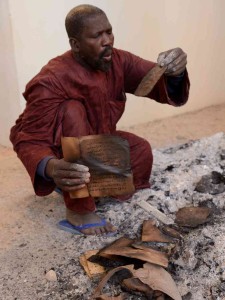A team from UNESCO have reported that the damage done to Timbuktu’s cultural artefacts during its occupation by the Islamist militant group Ansar Dine last year was far worse than had previously been estimated.
Ansar Dine occupied Timbuktu in April 2012 as part of the ongoing Malian conflict and there imposed a severe form of Shariah law. Believing the city’s famous religious shrines and collections of medieval manuscripts to be contrary to Islam – even though they were created by Muslims – they set about destroying them. The group were expelled from the city earlier this year by a coalition of French and Malian forces.
UNESCO’s visit has now been the first systematic attempt to survey the damage since Ansar Dine’s withdrawal. Recent reports had suggested that the situation was not as bad as originally feared, yet their latest findings show these reassurances to have been unfortunately misplaced.
Speaking to the BBC World Service, expedition leader Lazare Eloundou Assomo outlined the extent of the damage.
“From the information that we received during the occupation, we thought only nine mausoleums from the World Heritage List were damaged. But actually, when we arrived on the site, we had fourteen mausoleums damaged.
“What we also noted is that not only 2,000 to 3,000 manuscripts were lost. The estimation, today, is of 4,203 manuscripts that were completely lost,” he said.
Assomo also expressed his fear for the thousands of manuscripts that he believes were smuggled out of Timbuktu for their own protection. Without proper professional preservation, they too are at risk.
“We are entering the rainy season, and there is a lot of humidity there”, he said. “So we will need to intervene as soon as possible to put them in boxes that can resist the humidity.” Previously, the manuscripts had been protected in an air-conditioned library.
As well as a booming trade city, “Golden Age” Timbuktu was a major centre of Islamic and African learning between the twelfth and seventeenth centuries. Its priceless collection of 700,000 manuscripts, which have been kept in both public libraries and private collections, include works on religion, law, literature and science.
Recognising its holy places as “vital to the early Islamization of Africa”, UNESCO awarded the city World Heritage Site status in 1988.
Assomo now insists that the reconstruction and safeguarding of Timbuktu is a major priority. For him, the city is a “symbol of African history”.
“It is a place where many, many things happened since the twelfth century,” he said. “A place of knowledge… a place that tells us a lot about how great the African people were and continue to be.”











